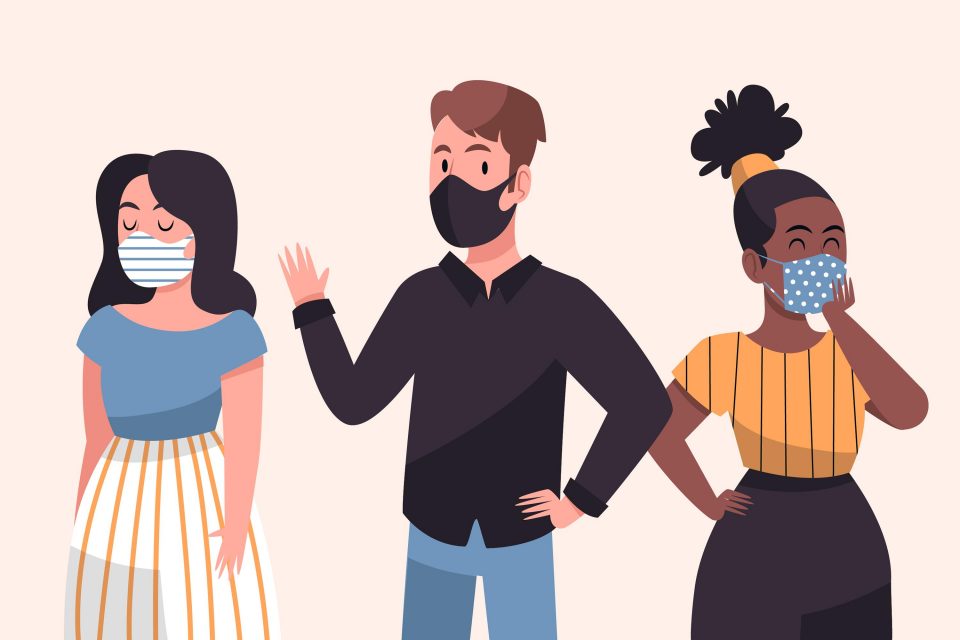How can we make Web design leads work harder? How do we turn the tables and squeeze more revenue? Here are the answers:
1. Follow-Up Fast – Really Fast

While this may sound impossible in some cases, take note that one study showed that leads are more likely to convert to paying customers if you can follow-up with their inquiries in five minutes. Again, this isn’t always possible, but do try to respond as quickly as you can the moment someone shoots an email or schedules a call. This is probably due to the fact that CX or customer experience has become a leading factor in lead generation and customer retention in the past few years. It’s likely the number one factor now, considering that people are making most of their purchases and transactions online.
2. Create Personalized Customer Experiences

Personalized customer experiences are now possible with the help of marketing automation. Marketing automation is one of the leading methods for personalizing CX. Below are some important points of note:
– 35% of customers say that they want access to chatbots. Remember – chatbots don’t have to be impersonal. Conversational marketing will help you communicate with your customers the way they want to be handled during inquiries, and while they are surfing your site. Conversational marketing is a two-way street: you listen and provide information that is tailored to the needs of specific segments of your audience. Artificial intelligence allows business owners to use natural language processing to improve responses and provide the right kind of feedback to users.
– Lead segmentation helps you provide personalized customer experiences. There are so many ways to strategize and tailor experiences. You can create a specific segment for people who have visited your site at least five times in the last month. You can also segment leads who do not open any of your emails. Another important goal is to zero in on high-value leads that provide the highest revenue to your business. These leads must be given more attention in the long term. People who have had good CX in the past are more likely to return and purchase more products and services from your site.
– Personalization isn’t about calling people by their names when you send out email blasts. Personalization is beginning a strategy with customer behavior in mind. This is why segmentation is so important. There can be no personalization if you are not aware of the behavior first.
Within this context, the landing pages of websites need to improve too. Forms have to become even smarter for customers. Explore different kinds of offers and forms, and see which work best.
– Artificial intelligence and machine learning are now permanently part of the digital marketing landscape. Digital marketing tools, especially Web software used to manage campaigns, are now gradually adopting various modes of data analysis that make use of machine learning. A good example of this would be Facebook Ads, which has been using machine learning to gauge the best approaches for running a campaign.
Machine learning can also help with smarter A/B testing. The more data you can analyze with AI and machine learning, the better the results of your campaigns. Of course, the human will be taking all of this data to transform it into a workable strategy.
3. Work on Lead Nurturing

If you want to maximize the value of your leads, you need to start paying attention to your lead nurturing strategies. Essentially, lead nurturing is the process of building a relationship with prospective customers at various stages of the buyer’s journey. Lead nurturing is important because it helps with improving the control of your business’ cash flow. It’s also there to help maximize the value of your time and, of course, the value of your leads. As we have mentioned earlier, personalization becomes possible when you know how to segment your leads properly. You can land 47% more purchases with segmented leads, and you don’t have to break your back, trying to attract more leads in the process.
This goes against the notion that there is just one ideal type of customer. The “one size fits all” technique won’t work, especially in the new normal. An easy way to visualize the task at hand is by thinking of yourself as a real estate agent. When you are helping home buyers find the right now, the same spiel isn’t going to work repeatedly. It would depend on what the buyers actually need. You already have access to consumer behavior at this point. Your job is to shape messages that will resonate with people with different kinds of circumstances.
There are several ways to segment your leads. The first one is the simplest: demographic segmentation. Demographic segmentation means you are going to focus on the location, gender, and age of your leads. The targeting will be somewhat broad, but it will still be effective in the long term.
The second method for segmenting leads is through a psychographic. Psychographics are more in-depth, and because of this, you can focus on the customers’ brand affiliations, online habits, and patterns of online spending. How are you going to get psychographic data? The simplest way is to send short surveys to your list. Focus groups and discussions are also encouraged if you can get them. The goal is to identify the things that consumers value so you can promote those things on your site.
The third method is segmenting by engagement. With this method, we are interested in creating segments based on different aspects of customer engagement to twitch your brand. The basis of the segmentation can be where the user engaged with your brand, how the user engaged with you, and even when the user makes contact. The purpose of segmenting by engagement to determine the level of interest or desire of the consumer when it comes to your brand. Generally speaking, a high mark on the engagement factor means customers are well-informed, and the interest in purchasing is already building. Those who score low in this test require increased education and additional time to get to know your brand.
The fourth method is to purchase behavior. A customer relationship management system is capable of making analytics for you. Purchase behavior can be used as a marker for future behavior when you run additional campaigns for your Web design business.
4. Maximize Lead Value with Buyer Personas

Digital marketers use buyer personas to understand further how they should communicate to specific segments of their list. Here’s an example of a profile of a buyer persona:
Lovely Linda
Love, Linda is a 40-year old businesswoman. She has downloaded a few templates in the past few months. She has not hired your company to design her website. She frequently opens emails regarding Web design and business. She is somewhat responsive when you see information through email.
Based on Lovely Linda’s basic information, it appears that she is still on the fence about hiring a Web design company to make her site better. What you need at the moment is to reconfigure Lovely Linda’s belief about Web design. She may not think and feel that it complies necessary to make the site profitable and relevant. She may not believe that there is a strong connection between Web design and improving her branding efforts. Therefore, you can start creating content for all the users that fall under the Lovely Linda profile.
Content that can help convert Lovely Lindas include:
– Emails that improve the initial communication regarding the importance of Web design to branding and other marketing efforts.
– Additional resources that illustrate the urgent need for improved Web design
5. Revamp Your Offers

Lead segmentation is just one part of the process. After creating the segments and crafting the buyer personas, the next step is crafting the actual offers that will convert well. The purpose of strategizing your offers is to be able to develop new offers and to be able to send these new offers to the right groups of people. Timing is also essential.
Sending offers is a complex task. If you make an offer too soon, it’s possible that it’s going to backfire on you. If the offer is made too late, then people may have already moved on and accepted other offers from your competition. To avoid this problem, your offers have to be crafted and sent out to segments using past consumer behavior that you have already accrued.
Consumer behavior is a spectrum, and again, there is no “one size fits all” solution for any industry or market. Some users are more likely to buy everything that you have to offer. But as for the newcomers? It has been estimated that only 4% of newcomers are ever ready to make an immediate purchase. So naturally, we must turn to analytics and lead nurturing to help bring consumers from point A to point B.
One thing that we have learned over the years is that it is vital to break the ice as quickly as possible. Breaking the ice means the customer has to get something from your business, either in the form of a free download/item or a small purchase. You have to start with these small actions or purchases because we want to create momentum. We want to start layering as soon as possible to build brand trust. Reluctant buyers will not always be reluctant buyers.
To determine which of your products and services are appropriate for the various buyer personas that you have created, create a spreadsheet of your products and services, and list them in order of their prices. Start with the lowest-priced products and move up to the highest. Create a basic promotion for each of the products and list down the various buyer personas that you have developed. Next, mark the personas that you think will respond well to your offer.
Some offers that you can use for this phase of your lead nurturing are:
– Time-sensitive offers – These are usually bundles of products or services that are either discounted or include other products and services that will naturally raise the value of the said bundles. These bundles can only be purchased within a specific timeframe, such as within 24 hours, or three days, or something like that. The emphasis is, of course, the time element, and your leads have to move fast if they want to get extra value for their money.
– Discounts – Coupons for discounts, however big or small, are popular with all segments. Coupons are a positive thing. They have a positive psychological impact on people. They make people happier. The tricky part here is to offer a discount that people will love without losing your profit margin too much. This may be slightly tricky with Web design services, so think it through properly.
– Price adjustments via service reduction – Reducing the hours dedicated to supporting or consultations can be used to reduce the cost of packages. This is perfect for Web design and SEO, where professionals have to figure in the hours needed during consultations.
– Volume purchase or group purchase – This is another great way to get more people to buy from your Web design business. You can also set up an easy referral program where old customers can get discounts if they successfully refer clients to you. The credit can be applied directly to the sites that you have worked on before.
– Product version offers – You can make different versions or iterations of your service bundles, and offer leads different price points.
– Servicing pairings – The logic is similar to service bundles, but here you are going to pair specific services that go naturally together with the purpose of increase the value of the pairings and making the offer more interesting to both old and new customers.




